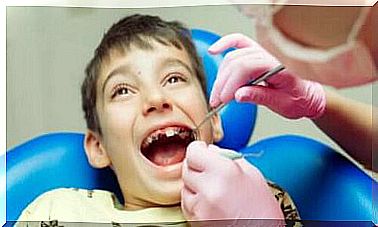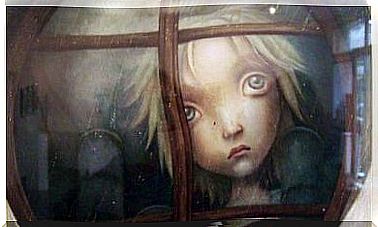Infant Spots: What Are The Causes?
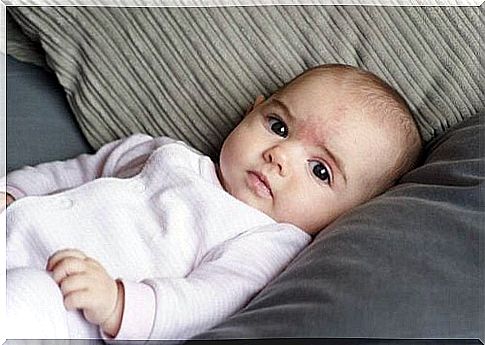
The spots of newborns cause a lot of curiosity : sometimes they are something usual, while in other cases they are shrouded in an aura of mystery. What is certain is that they are quite common and, usually, harmless. Nonetheless, they can raise concerns about their cause and evolution.
Therefore, in this post we would like to clarify some doubts concerning infant spots , relying on the knowledge of specialists.
According to health experts, skin blemishes can be explained in many ways. While all of them deserve some attention, only a few can pose a real problem. Birthmarks present at birth are fascinating for the coloring they give to the baby’s skin and are a source of curiosity for parents, who begin to get to know the child.
In general, the jolt that newborn spots cause us is destined to pass, as we get used to seeing them. We usually compare them with a birthmark present on the body of the father, grandfather or brother, and they soon become a sign that defines him as an individual.
What Are Infant Spots?
Doctor Oscar Fielbaum, a pediatrician, describes infant spots as changes in the color of the baby’s skin. They may or may not be present from birth, as they sometimes tend to appear after a few weeks.
A feature of birthmarks of this type is that they remain intact throughout life. However, some are destined to disappear over time. However, regardless of their location, size or color, parents should consult a pediatrician for evaluation.
An expert says that even though most of these spots are harmless, it’s best to diagnose them as soon as possible, as timeliness could make any treatment more effective. However, the general explanation for these cases is that it is a hormonal or genetic consequence, or the nourishment that the fetus received during gestation.
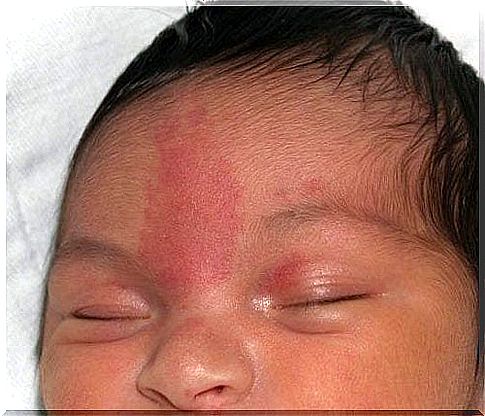
Since baby’s skin is very delicate, it is recommended that you do not take any steps to treat the mole or blemish without receiving medical advice. Before proceeding with any treatment, it is essential to consult a doctor, because an intervention is not always necessary. Furthermore, by applying chemicals or products to remove the stain, we could make sure that these are absorbed through the skin.
Types of Infant Spots
The spots or moles may vary in characteristics such as size, color or shape. Based on these factors, experts classify them as hemangiomas, nevi or ruby angiomas. Likewise, they can be small, medium or large; they appear indiscriminately in any part of the body and can be classified according to their appearance and their tonality.
As for the size, the spots of newborns are classified into “small”, if they measure less than 1.5 cm (they are the most common), “medium”, when they measure between 1.5 and 2 cm, and “large” , in cases where they exceed 2 cm. According to other characteristics, however, the following types of stains are identified.
- Hemangiomas. They are vascular tumors that can vary in size over time, and can be a little more concerning than other types of spots. They are found in at least 20% of newborns, are deep red in color and strongly depend on genetic inheritance. They are more common in premature babies, especially girls.
- Nevi. Also known as congenital, they consist of pigmented cells with a flat or protuberant surface. In some cases they may have small hairs and appear years after birth. They appear in 1% of children, and their size can vary from small to large.
- Mongolian blue spots. They can be blue or greyish and are generally large and have wavy edges. They mostly appear in dark-skinned people and tend to disappear in the first few years of life. They are flat spots and are not associated with disease because they are found on the skin’s surface. For the most part, they appear in the back and buttock area.
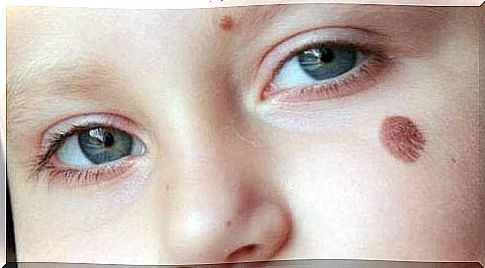
- Coffee and milk stains. Each baby can have more than one. They are smooth and quite clear, and their incidence level reaches 50%. Due to sunlight, these spots can lighten further or disappear entirely.
- Wine stains. They are common on the scalp, face and neck; The color varies from pink to violet, up to the color of port wine. On average, they appear in three out of a thousand cases. Since their origin is vascular, however, they tend to last longer, darken and develop a certain bump.






